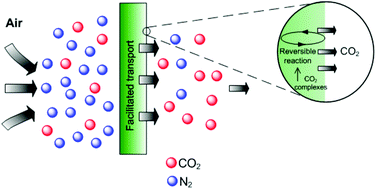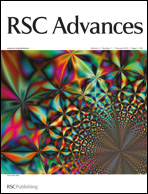Capturing carbon dioxide from air using a fixed carrier facilitated transport membrane
Abstract
This paper reports the facilitated separation process of carbon dioxide (CO2) from air using polyethylenimine (PEI)–poly(vinyl alcohol) (PVA)/polyethersulphone (PES) hollow fibre composite membranes. The membranes were prepared by coating a thin layer of PEI–PVA on PES hollow fibre membranes. The prepared membranes were assembled and tested for CO2 permeance and CO2/N2 selectivity using compressed air as the feed. The effects of the PEI concentration and drying temperature for the preparation of composite membranes were investigated, the operation conditions were optimised, and the capability of capturing CO2 from air was evaluated using these membranes. The drying temperature for maximising the CO2 reaction was found to be 100 °C. It was found that the separation performance increased when the PEI concentration increased. The highest permeance for a membrane containing 6% PEI was 1.4 × 10−7 mol m−2 s−1 Pa−1 with a CO2/N2 selectivity of up to 300 at a lower pressure (1 bar). At a higher feed pressure (3 bar), the permeance increased by 300% from 2.6 × 10−8 mol m−2 s−1 Pa−1 to 7.7 × 10−8 mol m−2 s−1 Pa−1 when the feed flow rate was increased. By using 6% PEI in the membrane active layer, a CO2 concentration of up to 0.8% was collected on the permeate side at the higher feed pressure (3 bar). These results clearly show that CO2 can be concentrated from air by a facilitated transport mechanism.


 Please wait while we load your content...
Please wait while we load your content...